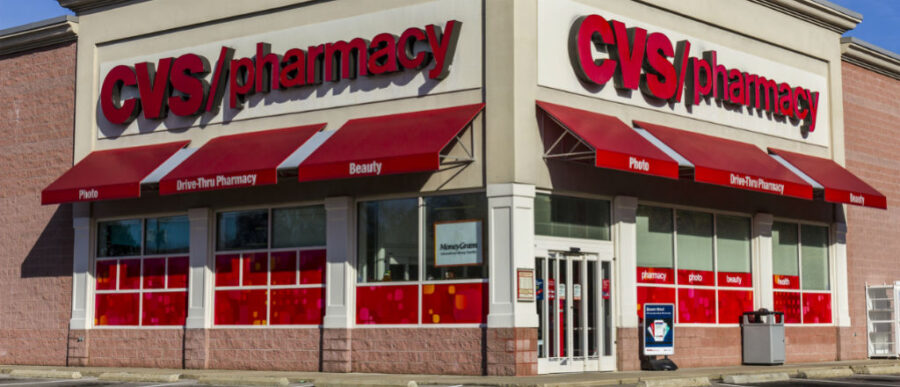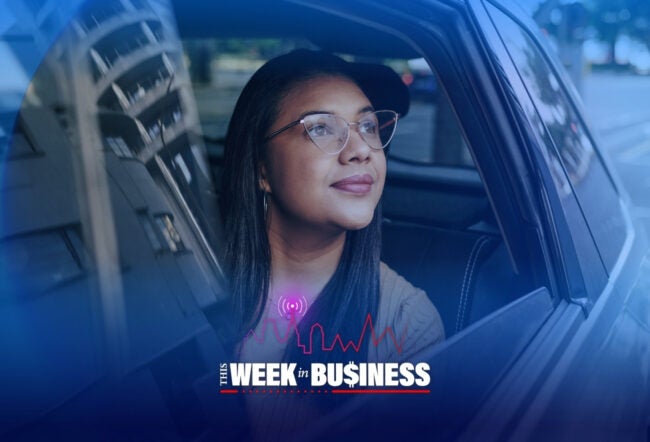America’s health care system has been on the examining table lately: from the tortuous battle over the Affordable Care Act, to Senator Bernie Sanders’ bill to allow low-cost prescription drugs in from Canada, to the intriguing announcement in January that Amazon, Berkshire Hathaway and JPMorgan Chase would create an independent health care company for their employees.
Meanwhile, less noticeably but significantly, the basic notion of “going to the doctor” is changing. Over the past several years, pharmacies like CVS, Rite Aid and Walgreen’s have been making inroads into providing basic medical services you could only get at a physician’s office (provided it was during business hours and you could make an appointment) or a hospital emergency room. At the recent Wharton Health Care Business Conference, CVS executive VP and chief medical officer Troyen Brennan shared the pharmacy giant’s plans to reshape the health care landscape.
Brennan talked about the gaps in care that many Americans are struggling with, noting that there’s a shortage of primary care doctors in the U.S. Several studies have predicted the shortage will only get worse given our aging population’s increased needs. Currently in about a third of U.S. states, only half or less of people’s primary care needs are being met, according to a recent MarketWatch report. The problem is especially bad in rural areas.
Moreover, many people with private health insurance have trouble affording their deductibles. Without some sort of true innovation in the model, Brennan said, more people will simply be without insurance. “There’s a whole set of the middle class which is basically threatened by the increase in health care costs,” he said.
Combining Data with Convenience
Given this state of affairs, Brennan envisions an expanding role for pharmacies like CVS. He said CVS is creating a “different type of chassis” for facilitating and improving health care delivery. The concept is to combine data-driven insights into customers’ health with the “convenience and intimacy” of treating patients in CVS’s retail setting.
Currently in about a third of U.S. states, only half or less of people’s primary care needs are being met, according to a recent MarketWatch report.
The largest pharmacy chain in the U.S., CVS is ubiquitous: Its bright red signs dot the landscape. It boasts nearly 9,800 retail locations in 49 states, the District of Columbia and Puerto Rico. Brennan noted that more than 75% of the U.S. population lives within five miles of a CVS pharmacy.
The company has already entered the health care arena, running over 1,100 retail health clinics (CVS MinuteClinics) staffed by nurse practitioners and physician assistants. The providers diagnose and treat minor illnesses and injuries like strep throat and bee stings; do screenings for blood pressure, cholesterol and glucose; give vaccinations and injections; and offer wellness services, according to the company’s information. Brennan said 200 optometry and audiology centers will be added to CVS stores this year.
Also under the CVS umbrella is Caremark, which is “a little more on the insurance side,” a roughly equal-sized business that does pharmacy benefit management services; Omnicare, a long-term care pharmacy services provider, and Coram, which offers home infusion. CVS is also in the process of acquiring Aetna, which would greatly expand its footprint in the insurance space. At $69 billion, the acquisition was last year’s largest, according to Reuters. The same article reported that CVS intends to have its clinics provide medical services to Aetna’s approximately 23 million medical members.
In Brennan’s view, pharmacists and nurses such as those on staff at the MinuteClinics “do a much better job of communicating and are a lot more valued by individual patients than doctors.” At the same time, he emphasized that he views retail clinics as not competing with, but complementing, the services of primary care physicians. “We’re not trying to establish a different and alternative system, but one that’s basically integrated in,” he said. If the patient does have a regular doctor whom they see, that provider would be kept “completely in the loop.”
He also said retail clinics can provide “a lot of basic primary care and prevention that’s not occurring today in the health care system.” He asserted that supplying this care would help people stay healthier, thus driving down the nation’s high medical cost burden. The MinuteClinic website asserts that the clinics offer “convenient, quality care at a lower cost than other health care providers.” A basic health screening – a review of medical history, blood pressure and weight — runs from $59-$69. An annual physical costs $89. Lab tests like urinalysis ($35), lipid panel ($37) and strep test ($35) are priced a-la-carte in conjunction with basic services.
Adherence and Data Analysis
One major health issue that CVS tackles is adherence: making sure people consistently take the medicines they’re prescribed. This effort of course aligns with its role as a retail pharmacy. “We use [adherence] as our central paradigm in terms of a lot of things that we do,” Brennan said.
“There’s a whole set of the middle class which is basically threatened by the increase in health care costs.” –Troyen Brennan
He also talked about helping reduce hospital readmission, another costly problem: many hospital patients who are released get sick again and end up going back in. “Often, these cases are coming out of the hospital and not seeing anybody at all; they have no other health care provider,” said Brennan. “We published a paper two years ago in Health Affairs showing that we decreased readmissions by 50% … simply by doing a comprehensive medication review with the patient.”
Brennan said CVS sees a big opportunity in increasingly having its MinuteClinics monitor patients with chronic conditions: specifically asthma, COPD, depression, hyperlipidemia, hypertension and diabetes. “They’re bad diseases, but they are very good diseases for us to be after,” he commented. These patients are already coming into a CVS store up to 15 to 20 times per month, he said, contrasting that with the average person who sees their doctor about three or four times a year. CVS could do simple biometric monitoring on a routine basis with these patients and also help with adherence, which is a “huge issue” for them. Engaging these individuals can lead to substantially better health outcomes, he said.
CVS would also like to move more into the urgent care space, according to Brennan. Urgent care centers, another relatively recent health care phenomenon, differ from retail clinics, although many people confuse the two. The former are legally required to staff at least one board-certified physician, and they can perform X-rays and lab tests. For conditions such as sprains and strains, vomiting and diarrhea, and infections, for example, urgent care is more appropriate than a retail clinic.
“Right now, we do about 65% of what goes on in urgent care,” Brennan noted. He said CVS intends to expand that capability so it can attract patients who would otherwise be hurrying to the hospital emergency department.
While CVS plans to increase the number of nurse practitioners it hires, it’s also exploring AI options for interacting with patients to complement in-store visits. Brennan noted that AI is offering new avenues for helping patients at low cost without sacrificing quality. “If you’re [messaging with] an AI-enabled health assistant, you can’t tell that it’s not a human being.” And the technology continues to improve, he noted.
Also on the tech side, Brennan said CVS wants to hone its ability to glean actionable data from electronic medical records and insurance information, in order to identify health care needs that aren’t being met and address them from a prevention standpoint. “I think we’re just beginning to break through with regard to a machine learning approach, or deep learning approach, with the data that’s available,” he said. He believes this type of analysis will accelerate greatly over the next decade and wants CVS positioned to take advantage of it.
Any competition or innovation is good, Brennan said, “because it forces us to do new and different things and potentially move the [health care] system … the right way.”
Brennan noted that data analysis is another area in which CVS could enhance a primary doctor’s efforts. Physicians are already overwhelmed with information about patients via the electronic medical record, he said. If additional metrics are flooding in from patients’ home health monitoring devices, CVS could track them. Brennan said he expected that doctors would welcome “our ability to basically analyze that data,” as well as “intervene, keep them in the loop, bring them in when necessary.”
Fending Off Amazon
Brennan was asked to comment on Amazon becoming a competitor. The tech powerhouse recently gained approval from at least 12 states to become a pharmaceutical distributor. Any competition or innovation is good, answered Brennan, whether it’s from Apple, Google, Amazon or someone else, “because it forces us to do new and different things and potentially move the [health care] system … the right way,” he said.
He noted that CVS is in the process of rolling out same-day delivery from its stores. The service is already available in selected cities and will go nationwide by the end of next year. Being able to deliver medications to people’s home the same day they’re prescribed is a big change for CVS that he feels is important to the business, he said. He speculated that 60% to 70% of CVS’s distribution might migrate in that direction.
Home delivery aside, in Brennan’s view the proliferation of CVS’s retail stores around the country is a major strategic advantage. “You can park right next to where we are and walk in easily,” he said. “It’s the convenience factor that we’re hoping is going to lead to substantial engagement.” He commented that new entrants to the market might find it tough to beat CVS’s several thousand “physical locations already filled with people who do health care.”



